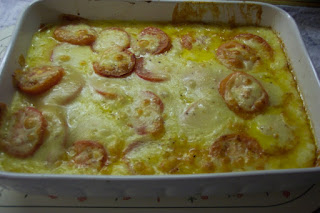The Family History Writing Challenge
Feb 1st-28th
A 28-Day Commitment to Writing Your Family History
The What, When, Where and How of it All
Why should I sign up?
To actively participate in an opportunity to write your family history, without having to worry about quality. The key to writing is to write. Stop procrastinating; finally commit pen to paper or fingers to key board. Those family facts, finally assemble them into a format someone will read.
Whom Do I Write About?
A single ancestor, a surname, a branch of your tree, you pick.
You select the ancestor or ancestors, the timeframe, just keep in mind who you feel most prepared to write about in terms of research and interest.
How Much Do I Need to Write?
You pick the amount 250, 500, 1000 words a day whatever you can work into your schedule.
Do the math.
250 words x 28 days = 7000 words, you would be well on your way!
500 words x 28 days = 14,000 words, this would be an incredible start!
1000 words x 28 days = 28,000 words, you would be a hero!
Where Do I Write?
Write on your computer, ipad, typewriter, longhand (tough to do word count). Write in your office, at the kitchen table, the local coffee shop, the lawn chair (if your someplace sunny- lucky you), or beside a roaring fire (that would be me).
What If It’s Not Good Enough?
This exercise is not about quality. Very few of us can sit down and shoot out a masterpiece on the first draft. Newsbreak..... most of us take a half dozen passes at it before it is worthy of anyone else’s eyes. This is about making a start. There will be plenty of time to edit your masterpiece later, committing to the word count is a huge step to making it happen.
When Does it Begin?
The Family History Writing Challenge begins Feb 1st to February 28th. I am asking you to commit 28 days of writing your family history, in the hopes that you will get a running start and you will never look back.
Where Do I Sign Up?
Right here, leave your pledge in comments or link to your own blog post, no goal is official until you have written it down and shared it. Once you verbalize, you become more committed. If you prefer to keep it to yourself that's ok too. However, keep checking back or sign up through email, throughout the month, I will offer numerous posts to help keep you focused, offer you some tips for your writing and help you stay on track and reach your goals. At the end of the month, you can share how you did again here, or on your own blog.
What is stopping you from starting your writing? Let me know, and I will try to help you overcome those obstacles. Meanwhile, you have the next 2 days to get yourself organized to start writing.
Write your family history in 28 days, are you ready to take the challenge?
I'm going to commit to the 250 word level, because even though many of my posts run longer than that, 250 words is easy enough to do and doesn't put too much pressure on me, given that I have a whole pile of bits on the go in addition to a new job. My only problem is I haven't come up with a definitive plan of what I want to write about yet, so I need to think on it, although I do have a few ideas.....
How about you? Take the challenge! It might be the impetus you need to get some of that family history written that you've wanted to start!
How about you? Take the challenge! It might be the impetus you need to get some of that family history written that you've wanted to start!










